|
A SIDE TRIP FROM |
Disney Goes Hawaiian, Part 29: The News from Aulani A Disney Resort & Spa, 2019 |
||
|
|
|||
|
Yesterland usually deals with retired elements of Disneyland Park and other major theme parks. But not always. As someone who loves visiting Hawai‘i—especially O‘ahu—and who is fascinated by how Disney creates immersive environments, I watched with keen interest as Disney transformed 21 acres on a manmade lagoon in sunny West O‘ahu into Aulani, A Disney Resort & Spa in Ko Olina, Hawai‘i. Aulani opened in 2011. My interest has continued. This month, I spent two weeks at the Ko Olina resort. Although our room was not at Aulani, we spent time and money there. The pools, deck chairs, lazy river, and resort activities at Aulani are only for Aulani guests—but the shops, restaurants, and bars are for anyone with a wallet. This is my 29th article about Aulani. This time, I have news from Aulani, Ko Olina where Aulani is located, and the town of Kapolei where Ko Olina is located.
|
|||
|
|
|||
|
No construction yet at the Atlantis Resort next door |
|||
|
When Aulani opened at Lagoon 1 of the 642-acre Ko Olina Resort, its neighbor to the north was a JW Marriott luxury resort, which was subsequently upgraded and rebranded to a Four Seasons resort. To its south, a prime 26-acre development parcel was ready for another mega-resort. Over the years there had been a number of announcements of a spectacular new resort coming to Lagoon 1. For example, in 2005, there was news of plans for the “Grand Ko Olina Resort, Hotel & Spa, a $1 billion project integrated with an interactive aquarium adventure lagoon and cultural center.” But it was never built. |
|||
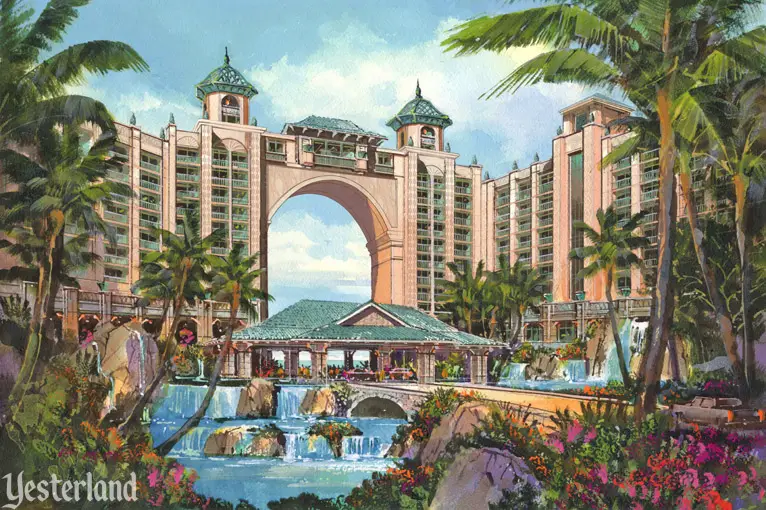
Rendering © Kerzner International Holdings Limited Initial rendering (2016) of the Atlantis Resort at Ko Olina |
|||
|
In January 2016, the news was that an Atlantis Resort was on its way. According to Hawaii News Now at that time, “Atlantis Resorts is finalizing a deal to build one of its famous ocean-themed resorts in Ko Olina, which could be the most expensive resort ever built, sources said.” Famous for its over-the-top resorts, the initial artwork showed a more traditional design, although still with two towers connected at the top. Meanwhile, China Oceanwide Holdings—a Chinese conglomerate involved with property development, banking, insurance, energy, media, and technology—had been buying up other parcels at Ko Olina. In December 2016, China Oceanwide also acquired the Atlantis parcel—with plans to proceed with the Atlantis project. |
|||
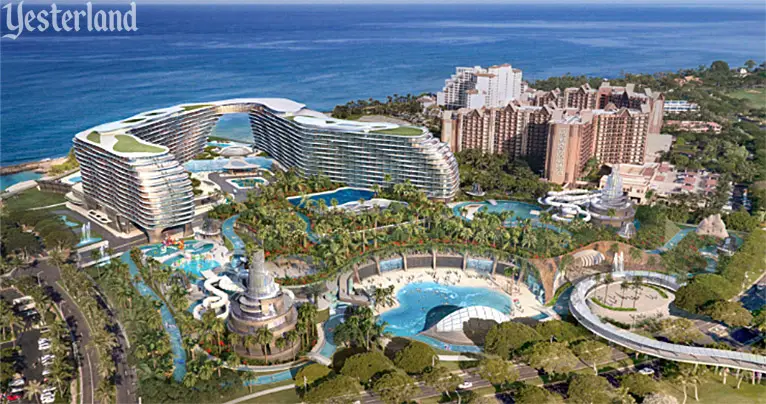
Rendering © China Oceanwide Holdings Revised rendering (2019) of the Atlantis Resort at Ko Olina, also showing Aulani |
|||
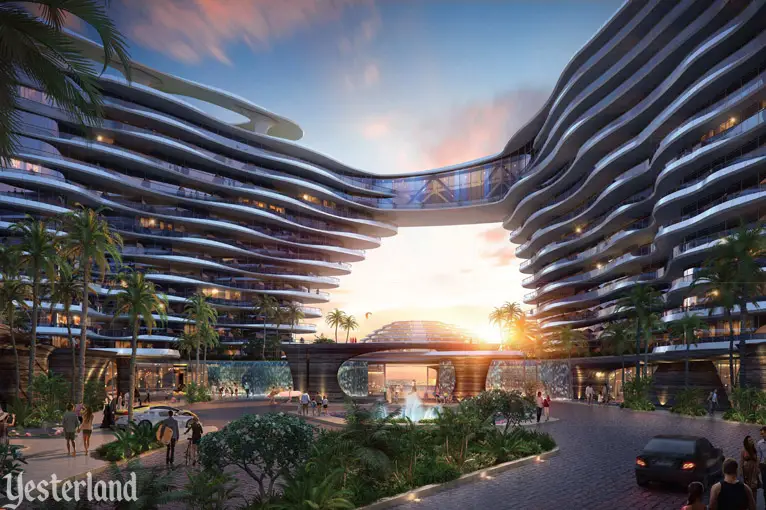
Rendering © China Oceanwide Holdings Rendering showing a ground-level view of the Atlantis Resort at Ko Olina |
|||
|
It’s now June 2019. Earlier this year, China Oceanwide released new renderings of the Atlantis Resort. There’s no resemblance to the previous art. The new design is dramatic, but does it represent Hawai‘i? According to the 2018 annual report of HOK Group, Inc., the project’s architects, the answer is yes: The site plan recalls the culturally significant shape of a traditional Polynesian fish hook, which communicates strength, integrity and a connection to nature. The shapes have meaning too, while giving a nod to other Atlantis Resorts: Derived from the Hawaiian surfer’s dream of the “big wave,” a dramatic massing of the 14-story structure is created by separating the two primary wings and connecting them with a multistory bridge that recalls classic Atlantis resorts in Dubai and the Bahamas. The building’s podium, including the main lobby rotunda, resembles an exposed rock face against which a wave is formed. The guestroom tower is capped by an undulating roof monitor that reinforces the wave metaphor. Curvilinear balconies continue this sine curve rhythm, emphasizing the design’s fluidity. A signature Atlantis Bridge Suite penthouse at the crest of the wave modernizes the brand’s classic aesthetic. The curved exterior expression is achieved through the design of the building skin and balcony, allowing for the stacking of the corridors and structure with only minor setbacks. There you have it. Atlantis Ko Olina is not futuristic. It’s a tribute to the Polynesian fish hook and the ocean waves of Hawai‘i. Okay, it still comes across as futuristic. And what a jarring contrast to Aulani! |
|||
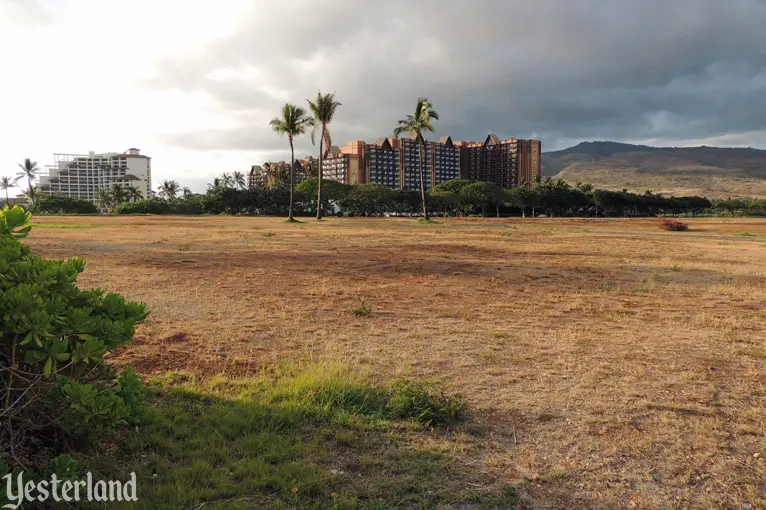
Photo by Werner Weiss, June 2019 Still just an empty parcel |
|||
|
There has been no construction activity at the Atlantis site, aside from the demolition of a wedding chapel and temporary real estate office in April 2017, after their leases ran out. In downtown Los Angeles, near Staples Center, a $1-billion project by China Oceanwide has been stalled this year when funds ran out. Not a good sign. If construction ever gets underway, guests at Aulani, especially those on the south side of the Ewa Tower, will face several years of construction noise. Aulani took almost three years from groundbreaking to opening, and Atlantis Ko Olina is likely to have a similar construction schedule. |
|||
|
New performance times at the ‘Ōlelo Room |
|||
|
Each evening, there’s live Hawaiian music on the patio of the ‘Ōlelo Room at Aulani from 6:00 p.m.to 9:45 p.m. Aulani hires wonderful acts who perform a variety of traditional and contemporary Hawaiian music, often with a story between songs. And, each early evening, there’s a Sunset Hour there from 5:00 p.m. to 7:00 p.m.— which is actually two hours. Beer is $5; wine is $7; there are a couple of special pūpū; and there’s a big menu of regularly priced tropical drinks (with and without alcohol) and pūpū. Reading the two paragraphs above, you might think the perfect time to go is between 6:00 and 7:00 p.m.—when the music and Sunset Hour pricing overlap. |
|||
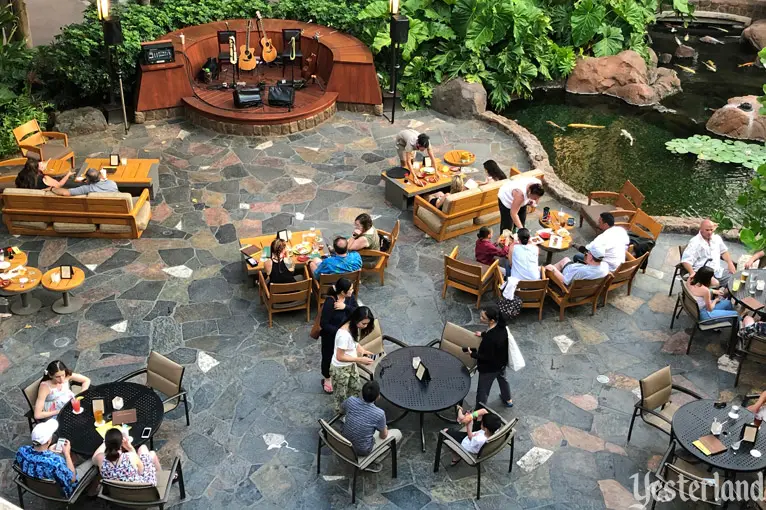
Photo by Werner Weiss, June 2019 Patio of the ‘Ōlelo Room at Aulani |
|||
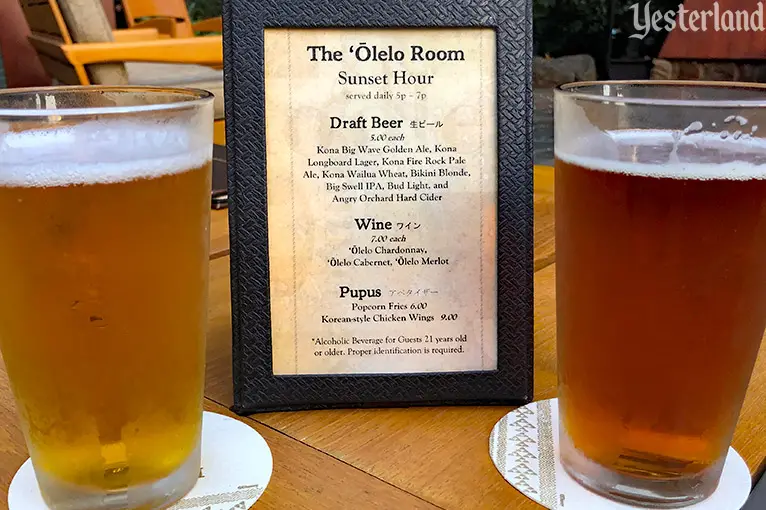
Photo by Werner Weiss, June 2019 Sunset Hour menu at the ‘Ōlelo Room |
|||
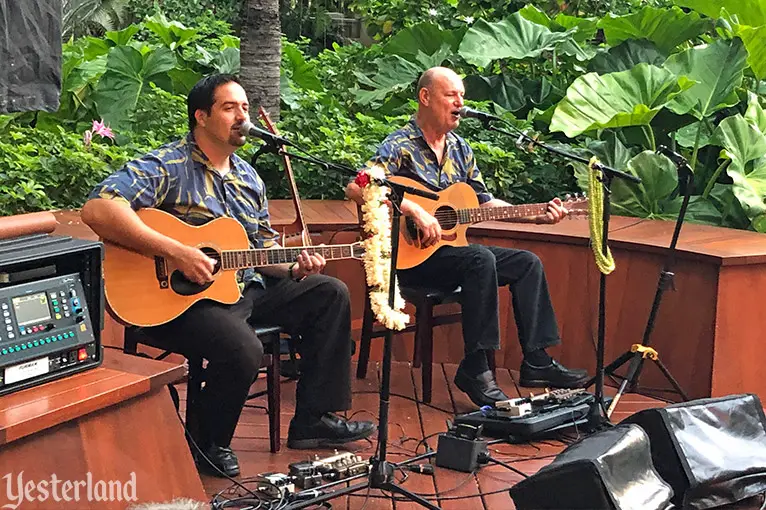
Photo by Werner Weiss, June 2019 Kamuela Kimokeo and Jerry Santos at the ‘Ōlelo Room |
|||
|
But there’s a catch. At the beginning of June 2019, the Makahiki restaurant adjoining the ‘Ōlelo Room began offering character dinners that overlapped with the music performances four nights per week. On those nights, the performers at the ‘Ōlelo Room begin their set at 6:00 p.m.—and then have to take a 45-minute break at 6:15 p.m. That’s not good if you arrive a few minutes after 6:00 p.m. hoping to hear music. Currently, the character dinners are Sunday, Monday, Wednesday, and Thursday. The solution those nights is to arrive around 6:50 p.m., get seats, order with Sunset Hour pricing, and enjoy a long set beginning at 7:00 p.m. Check the schedules at Aulani. Don’t rely on what’s written here. Things can always change. |
|||
|
Hawaii bans sunscreen harmful to coral reefs |
|||
|
The sun in Hawai‘i is intense—so it’s a good idea to rely on UV-blocking clothing, hats, and good sunscreen to avoid sunburn, skin damage, and long-term effects such as skin cancer. On May 1, 2018, the state of Hawai‘i passed a bill banning many sunscreens, effective January 1, 2021. No, the state of Hawai‘i is not trying to give you a sunburn. The state responded to research and evidence that chemicals commonly used in sunscreen—oxybenzone and octinoxate—damage coral reefs. |
|||
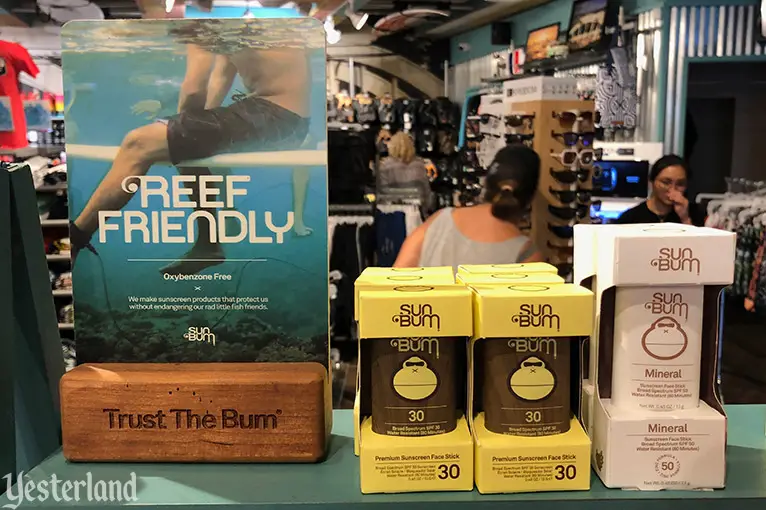
Photo by Werner Weiss, June 2019 Reef-friendly chemical and mineral sunscreen from Sun Bum |
|||
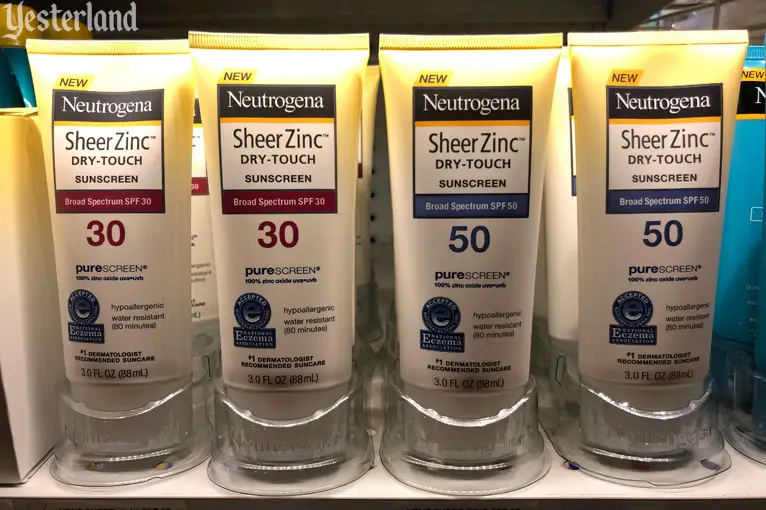
Photo by Werner Weiss, June 2019 Zinc Oxide product from Neutrogena (good), not to be confused with regular Neutrogena sunscreen (bad) |
|||
|
Some sunscreens block the sun’s harmful rays with chemicals. Not all chemical sunscreens are being banned. Some are labeled reef-friendly, and will continue to be sold in Hawai’i. Other sunscreens block harmful rays physically with minerals—zinc-oxide, titanium dioxide, or a combination of both. These are reef-safe—and possibly more human-safe too. This Yesterland artcle is not the right place for a long dissertation on how chemicals in sunscreen damage coral and other ocean organisms—and might even be harmful to humans because the human skin absorbs oxybenzone. You might want to do some Googling. Some stores in Hawai’i have already switched entirely to reef-friendly sunscreen. In fact, Costco did not even wait for the legislation to be introduced. If you’re buying sunscreen to bring to Hawai’i, shop carefully. Even if you’re not planning to swim in the ocean, anything you put on your skin will eventually wind up in there. |
|||
|
Farmers Market and entertainment at Ka Makana Ali‘i |
|||
|
If you look up the address of Aulani and other resorts at Ko Olina, the city is Kapolei, Hawai‘i. It’s actually part of the City and County of Honolulu, but it functions as a distinct city. Kapolei has long had big box stores and plenty of smaller shopping centers—but it finally got a real shopping mall, Ka Makana Ali‘i, in 2016. The open-air mall has a mix of national retail chains (even Macy’s) and businesses found only in Hawai‘i. The developer could have done a better job with landscaping and water features. (After all, this is Hawai‘i!) There’s too much concrete, and the main mall is too narrow. There are good reasons for tourists to visit Ka Makana Ali‘i. There are quite a few restaurants, with prices meant to attract local residents. Limon Rotisserie serves delicious Peruvian food in portions designed for sharing. The value is excellent. |
|||
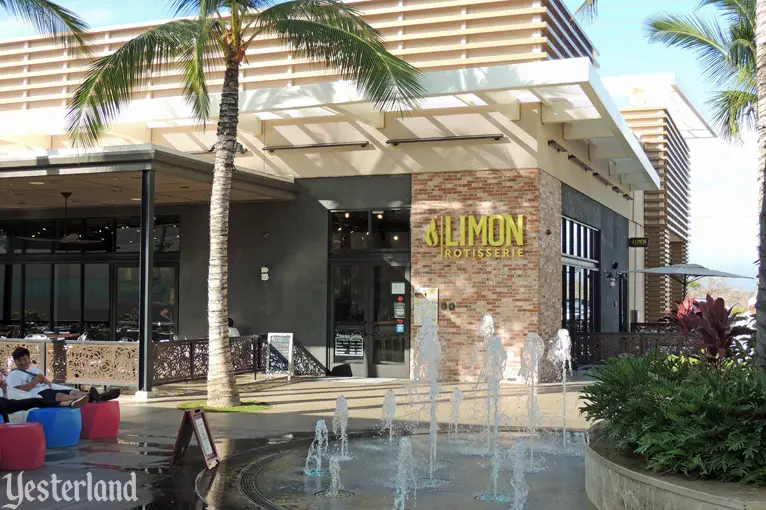
Photo by Werner Weiss, June 2019 Limon, one of many restaurants at Ka Makana Ali‘i |
|||
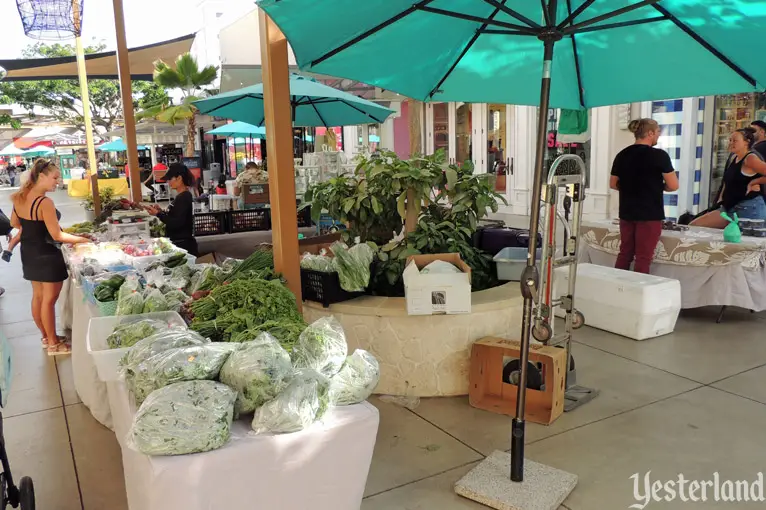
Photo by Werner Weiss, June 2019 Farmers Market at Ka Makana Ali‘i |
|||
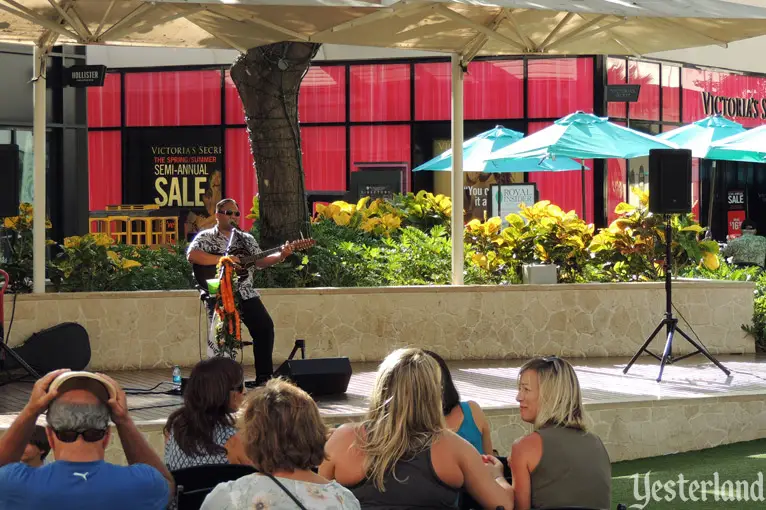
Photo by Werner Weiss, June 2019 Brandon No‘eau Serrano of Pu‘oloa at the Farmers Market |
|||
|
Ka Makana Ali‘i now has a Farmers Market twice weekly—Wednesdays from 4:00 p.m. to 8:00 p.m. and Sundays from 11:00 a.m. to 3:00 p.m. Compared to the huge Farmers Market at Kapi‘olani Community College in Honolulu, the one at the mall is modest. But you can get a meal, shop for food, and—based on the excellent singer on June 5, 2019—listen to first-rate Hawaiian entertainment. The Farmers Market will probably get bigger over time. |
|||
|
Hotels opening in nearby Kapolei |
|||
|
Until September 2016, Kapolei had no hotels other than the pricey resorts at Ko Olina. That changed when a six-story, 175-room Hampton Inn by Hilton opened at Ka Makana Ali‘i at the end of the month. Since then, the Hampton Inn has been joined by a 180-room Embassy Suites property, also part of Hilton. A 180-room Residence Inn by Marriott is scheduled to open in October 2019. A fourth, as-yet-unnamed hotel has been announced. |
|||
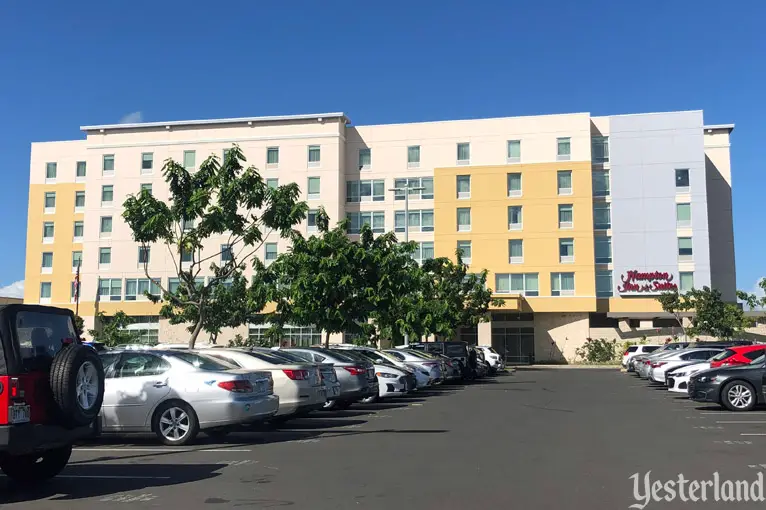
Photo by Werner Weiss, June 2019 Hampton Inn by Hilton at Ka Makana Ali‘i |
|||
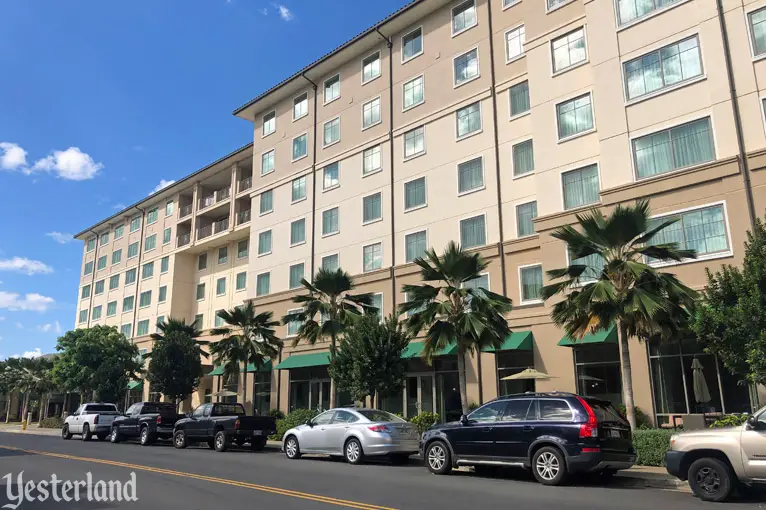
Photo by Werner Weiss, June 2019 Embassy Suites all-suite hotel |
|||
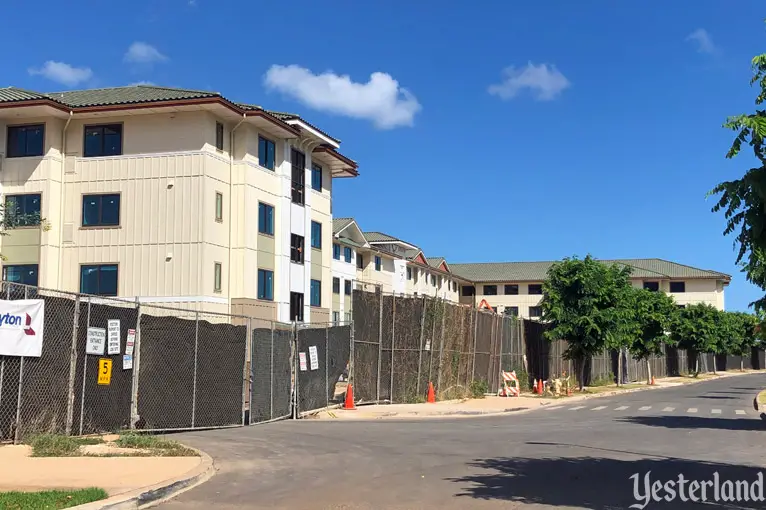
Photo by Werner Weiss, June 2019 Residence Inn O‘ahu Kapolei extended-stay hotel under construction |
|||
|
These new Kapolei hotels, located between Honolulu Airport and Ko Olina (closer to Ko Olina), are not marketed to tourists. But for guests at Aulani and other Ko Olina properties seeking to lengthen a vacation, they could work well—especially on arrival day from the mainland, when guests would otherwise arrive too late to enjoy their expensive resorts. Also, given the likely difference in room rates compared to Ko Olina, these hotels could serve as a base for day trips to Pearl Harbor, the North Shore, and other other O‘ahu destinations. Then, there would be no need to leave Ko Olina resorts when staying there. |
|||
|
|
Click here to post comments at MiceChat about this article.
© 2019 Werner Weiss — Disclaimers, Copyright, and Trademarks Updated October 17, 2021 |
||